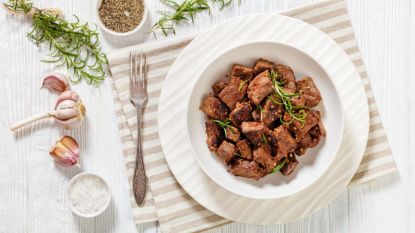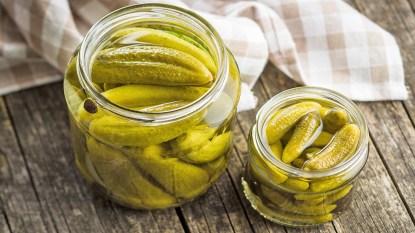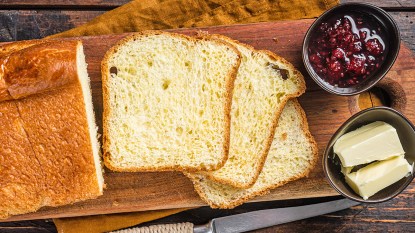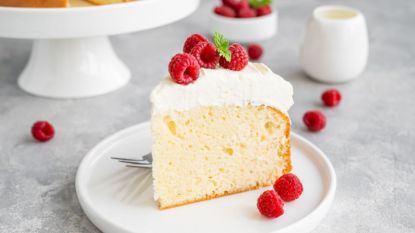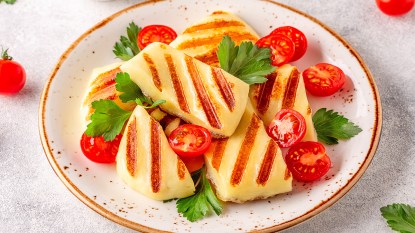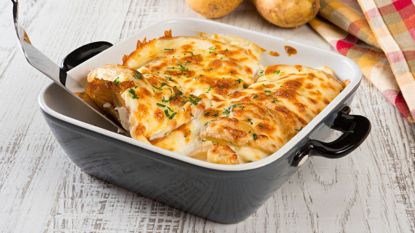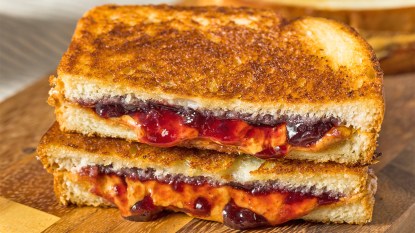The 8 Best Buttermilk Substitutes for Baking
There are even dairy-free and low-fat alternatives.
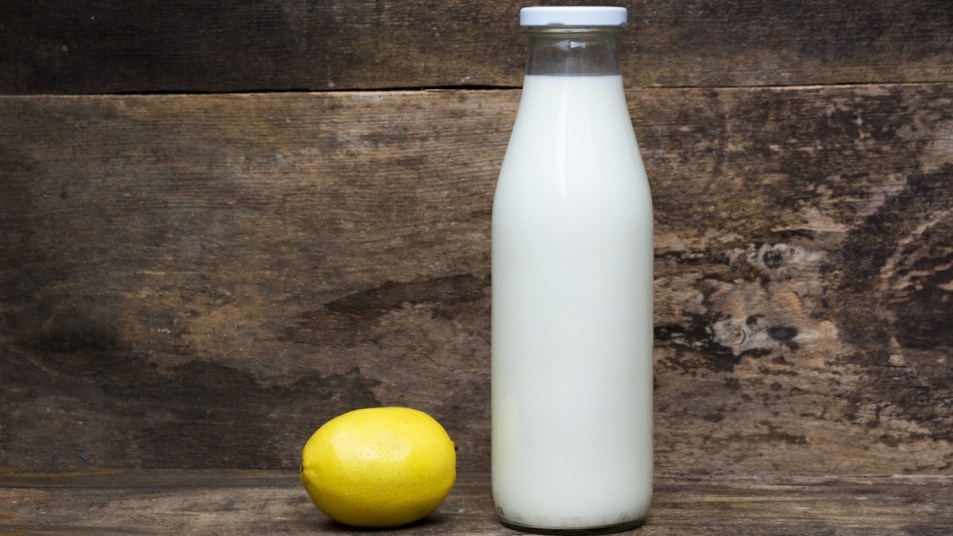
If you enjoy baking, you probably know that the best-tasting baked goods often include buttermilk. Its tangy acidity helps dough rise and breaks down proteins, giving you a more delicate crumb. For times, however, when you either don’t have the ingredient on hand or you need a dairy-free or low-fat alternative, there are several buttermilk substitutes that work just fine. What are they? Read on.
What is buttermilk?
Buttermilk is a fermented dairy product with a tangy, slightly sour taste (kind of like plain Greek yogurt). Traditionally, it was the liquid left over after churning butter from cream. The churning process separates the butterfat from the liquid, which becomes buttermilk. Today, however, most commercial buttermilk is made by adding lactic acid bacteria to regular milk. This creates its characteristic tangy flavor and thick, creamy texture. Buttermilk is often used in baking recipes because the acidity helps to activate the baking soda and baking powder. (The latter two ingredients are part of the leavening process.) Buttermilk is also a source of calcium, protein, and other nutrients.
Why use a buttermilk substitute?
With so many benefits, you might be wondering: Why use buttermilk substitutes in the first place? There are a number of reasons your baked goods may require it. These include:
- Lack of Availability: The most common reason for using a buttermilk substitute is not having any on hand. Buttermilk may not be a staple in every household, and it’s not always convenient to run to the grocery store for a single ingredient. Using a substitute can save you prep time and hassle.
- Dairy-free or Vegan: If you’re dairy-free or following a vegan diet (or are baking a sweet treat for a dairy-free or vegan friend), you’ll need to swap out buttermilk. Traditional buttermilk is made from milk, so it’s unsuitable for those who avoid animal products. Fortunately, several non-dairy options are available, such as almond milk, soy milk, and coconut milk.
- Health Concerns: If you’re trying to be healthy, swapping out buttermilk is a smart choice. While buttermilk is a good source of calcium and protein, it’s also high in both fat and calories. Using a lower-fat option like skim milk or almond milk will reduce the total fat content of your baked goods.
- Personal Taste Preferences: Finally, it may be as simple as disliking buttermilk’s taste. For example, using yogurt or sour cream can add a slightly different flavor profile to your baked goods, while using milk and vinegar can create a more acidic taste. Using a substitute can also help you customize your recipes to your personal taste preferences.
What are the buttermilk substitutes?
Here are eight of the most useful and easy buttermilk substitutes.
1. Milk and Lemon Juice/Vinegar
A popular gluten-free substitute for buttermilk is milk with either vinegar or lemon juice added. The vinegar or lemon juice’s acid reacts with the milk, creating a tangy flavor similar to that of buttermilk. You can use fresh lemon juice or the store-bought kind in a pinch. To make this substitute, add one tablespoon of lemon juice or vinegar to one cup of milk, and let it sit for a few minutes until it thickens and curdles. This substitute works well in recipes that require a small amount of buttermilk, such as pancakes or cornbread. Also, you’ll want to stick with the same type of milk that the original recipe calls for. So if it asks for whole milk, add your vinegar or lemon juice to a cup of whole milk.
2. Yogurt
Yogurt is another good substitute for buttermilk, especially in recipes requiring thicker batter or dough. Plain yogurt adds a similar tartness to your baked goods as buttermilk does, and it’s also high in protein and calcium, making it a healthy replacement.
Use an equal amount of plain yogurt as the amount of buttermilk that’s called for in the recipe. You may also want to thin the yogurt by mixing it with water or milk (or your final product may be much thicker than anticipated). Finally, be careful not to use sweetened or flavored yogurt, as this can ruin the recipe’s intended taste.
3. Sour Cream
Sour cream is similar to yogurt and can replace buttermilk when baking and frying (like fried chicken). The two dairy products are created in an almost identical way: To make sour cream, lactic acid bacteria is added to the cream and fermented. The result is a slightly sour, creamy spread perfect for baked goods and sweets. Because sour cream is thicker than buttermilk, replace it in a ¾ ratio. For every cup of buttermilk the recipe calls for, use ¾ cup sour cream and ¼ cup water or milk. (Like yogurt, using too much sour cream may produce an overly dense or heavy final product.)
4. Milk and Cream of Tartar
Another acid-based substitute for buttermilk is milk plus cream of tartar. Just like adding lemon juice or vinegar to milk, this substitute works because the sour taste of cream of tartar mixes and ferments the milk to closely resemble the taste and texture of buttermilk. To make this substitute, add one and ¾ teaspoons cream of tartar to every cup of milk, and let it sit for a few minutes until it thickens and curdles. This substitute works well in recipes that require a small amount of buttermilk, such as cakes and muffins.
5. Kefir
Kefir is a fermented dairy product (similar to yogurt) that can substitute for buttermilk. Use an equal amount of kefir as the amount of buttermilk called for in the recipe. One of the reasons for kefir’s popularity is its high volume of healthy microbes and probiotics. However, most of these microbes will be killed when exposed to high heat during baking. Despite this, kefir is still high in protein and is an effective choice for a slightly healthier buttermilk replacement.
6. Almond Milk
Almond milk is a non-dairy vegan buttermilk substitute that works best in recipes that require a small amount of buttermilk. That’s because although almond milk is similar in texture and can add moisture to the recipe, it has a unique flavor profile that, when used in high quantities, can dramatically alter the final product. On the other hand, almond milk is low in calories, cholesterol, and fat, making it a more healthful option for your baked goods.
7. Soy Milk and Vinegar
Like regular milk and vinegar, soy milk and vinegar makes a good alternative to buttermilk, particularly when you need non-dairy milk. To make this substitute, add one tablespoon of vinegar to one cup of soy milk, and let it sit for a few minutes until it thickens and curdles. Alternatively, you can use soy milk and lemon juice in the same ratio. Similar to almond milk, this substitute works well in recipes requiring a small amount of buttermilk, such as buttermilk pancakes or waffles.
8. Coconut Milk and Acid
Another dairy-free buttermilk substitution is coconut milk plus an acid (like apple cider vinegar or distilled white vinegar). Coconut milk adds a subtle tropical flavor and moisture to your baked goods, and the addition of acid helps it to curdle like buttermilk. Add one tablespoon of the acid to one cup of coconut milk for every cup of buttermilk your recipe needs.
A couple of things to note about replacing buttermilk with coconut milk — first, only use unsweetened coconut milk. Sweetened coconut milk typically contains a lot of sugar and may yield an overly sweet result. Also, although coconut milk makes for a delicious dairy-free alternative, it’s high in saturated fat — meaning it might not be the best option for those aiming to reduce their diet’s fat content.
Wrapping Up
So, will you stick with buttermilk or turn to one of these alternatives next time you run out? Don’t be afraid to experiment — you never know which homemade buttermilk substitute will result in your new favorite recipe.


